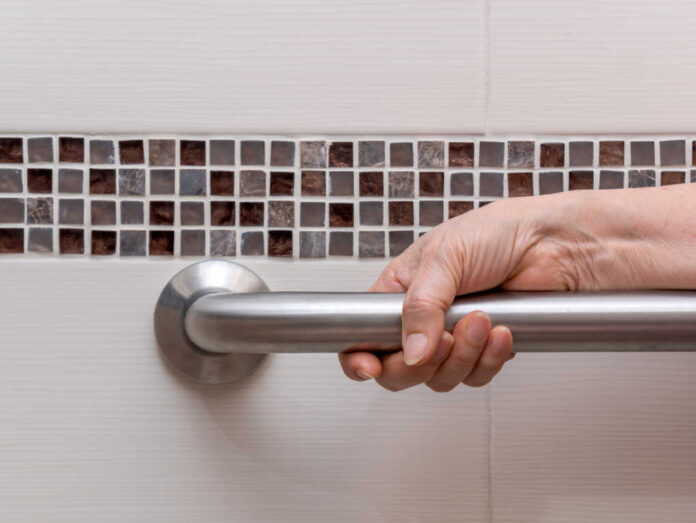
As we get older, we are at significant risk of falling and sustaining a severe injury.
Many factors can contribute to our increased risk of falling, such as:
- muscle weakness
- decreased mobility
- diminished strength
- balance problems
- excess weight
- slower reflexes
- vision changes
These could be due to chronic health conditions or simply age-related changes. Some of the medications commonly prescribed to older adults can have dizziness, drowsiness, syncope, and impaired balance as side effects.
And if a fall occurs, age-related weakening of our bones, joints, and muscles combined with slower healing rates can make the consequences very severe and life-threatening.
Improving Your Balance
One of the best ways to prevent falls is to work on improving your balance.
While standing behind and holding onto a sturdy piece of furniture, you can practice standing on one leg. Start small and progress patiently. If you feel too unsteady, have someone close by who can support you if needed.
Improving Your Strength
There are many exercises you can do to improve your muscle strength.
This doesn’t need to involve lifting heavy weights at the gym. You can build strength with activities such as:
- climbing stairs
- pool exercises
- yoga or tai chi
- walking
- resistance bands
It can also be helpful to improve your diet, so you are getting enough protein, vitamins, and minerals needed to keep your bones and muscles strong and healthy.
Improving Your Mobility
Staying active and engaged in activities that involve moving your body is essential to maintaining your strength and mobility.
If you can, try to do some light physical activity every day.
Short walks around your home or your neighborhood can be a great way to get moving and improve your overall health.
If you have trouble with mobility, ask your doctor or a physical therapist about the right exercises.
Improving Your Surroundings
One of the best things we can do to prevent falls is to make our surroundings as safe as possible.
- keep your floors free of clutter
- ensure that carpets, rugs, and floorboards are secure
- have good lighting in all areas of your home
- install handrails on all stairways
- remove electrical cords from high-traffic areas
- make sure your stairs are in good repair and have handrails on
- things you need should be easy to reach
- beds, chairs, and couches should be at a comfortable height to get in and out of
- install grab bars in the bathroom and anywhere else you might need them
- use slip-resistant mats in the bathtub or shower
- use a shower bench if you have trouble standing or balancing
Always keep your phone or an emergency call button close by if you fall and need help.
Making these changes to your home can help you, and your guests feel safer and more confident moving around your space.
But falls can still happen, even in the safest of homes. If you do fall, be sure to seek medical attention right away. Even if you don’t think you are severely hurt, you could have injuries that are not immediately apparent, or won’t heal and recover on their own.






















